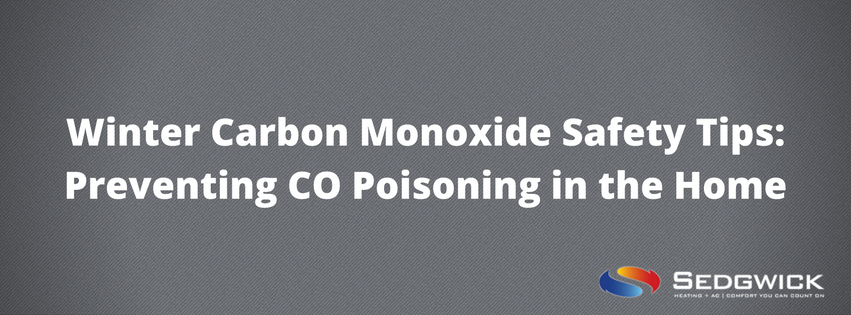How To Prevent Carbon Monoxide Poisoning In Your Home

Detecting carbon monoxide (CO) within the home is extremely important, especially during the winter season when people increasingly rely on gas furnaces, generators and related appliances for heat.
What is carbon monoxide and how is it produced?
Carbon monoxide (CO) is a colorless, odorless gas that results from the incomplete combustion of carbon-based fuels like gasoline, wood and natural gas. It can be dangerous because it robs the body of important oxygen in cells – leading to symptoms such as dizziness, headaches, nausea, and even confusion. Not only is it harmful, it can be deadly. According to the CDC, carbon monoxide poisoning led to over 5,000 accidental deaths in the U.S. between 1999 and 2010.
Tips on how to prevent carbon monoxide poisoning in your home?
First things first, it’s critical to have good carbon monoxide detectors that can alert you to the presence of this dangerous gas. In addition to investing in reliable, high-quality CO2 detectors, you’ll want to keep in mind a number of preventative measures – some of which are recommended by the CDC. Here are some noteworthy tips on how to prevent carbon monoxide poisoning in your home:
- Have a home HVAC audit performed at least once a year – especially if you have a gas generator.
- Ensure that multiple CO detectors are placed throughout the home, especially near bedrooms.
- Don’t use a gas oven to heat your home.
- Don’t run your vehicle in the garage with the door closed.
- Ensure that ventilation lines are clear and free of debris.
- Avoid running gasoline-powered devices within enclosed spaces.
- Avoid using gas-powered portable stoves within the home.
What are common signs of carbon monoxide poisoning?
The most common signs of a CO2 leak include: visible frost or fog around pipes, hissing or whistling sounds near CO2 lines, a smell of sulfur or burnt odor (though CO2 itself is odorless, these smells may indicate a leak in related systems), difficulty breathing or feeling dizzy in your home and malfunctioning CO2 detectors or alarms.
If any of these signs are present, evacuate immediately and contact emergency services.
After that, call Sedgwick for our 24/7, 365 emergency furnace repair services — often these leaks come from old, poorly maintained furnaces. Our experts know exactly what to do to get you safely and securely back into your home as soon as possible.